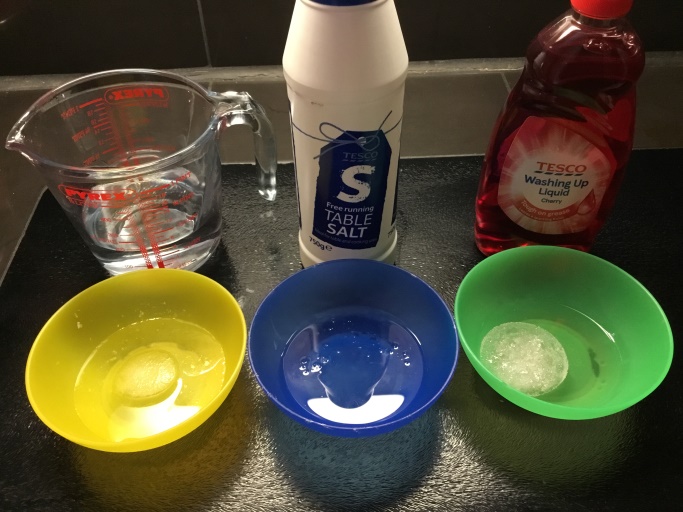Microwave Marathon results
Here’s what Mrs McLain found out in her investigations:
 |
 |
The wide, flatter ice block melted faster. It has a greater surface area for heat to ‘work on’.
 |
 |

The ice cube melted fastest in the warm kitchen. It melted slowest on the cool windowsill. The day of the investigation was cold and rainy. How might the result have changed on a warm, sunny day?
 |
 |
The wrapped ice cube melted more slowly than the unwrapped ice cube. The wrapping stopped some of the heat from the room reaching the ice cube and melting it. There was nothing to block the heat from melting the unwrapped ice cube.
 |
 |
The ice block made from salt water solution melted fastest.
The ice block made from washing up liquid solution melted slowest.
Adding salt to water disrupts some of the bonds between water molecules, making it easier to melt.
The molecules in washing up liquid are bigger and heavier than water molecules. More energy is needed to turn these molecules from solid to liquid, so this block melted slowest.